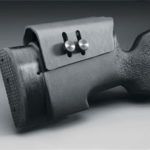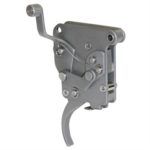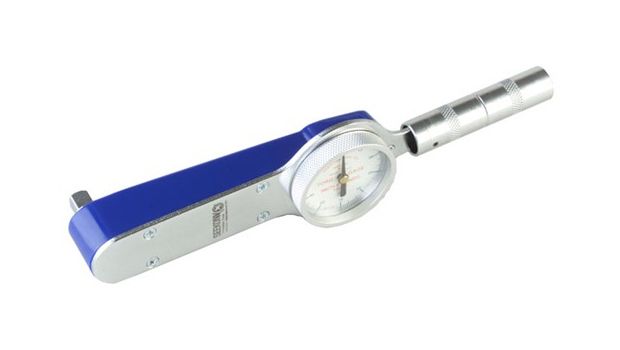If you want the most accuracy your bolt action rifle can give you, then this follow up article will help you make the last changes you need to perfect your long range precision rifle weapons system.
In the article linked earlier, I talked about the importance of action/stock assembly rigidity, as well as how to make the stock capable of supporting the amount of torque needed. In this post, I’ll focus on ensuring the proper torque on your action screws, adjusting the cheek rest, and working on the trigger.
Action Screw Torque
The torque applied on the action screws is crucial to determine accuracy and point of impact consistency. You can’t just screw in the action to the stock on a precision rifle. Screws must be tuned, like the strings of a guitar. For this purpose, you’ll need a torque wrench, since the applied torque must be both precise and uniform. Torque must be checked regularly (I do it before any shooting session, preferably after the transport), and the same amount must be re-applied every time you disassemble or reassemble the rifle.
The range of optimal torque settings varies depending on the stock conformation and material, the presence of bedding and pillars, and the conformation of the action. For standard commercial rifles, the manufacturers usually share the optimal torque settings for their products on their website; however, although you might be able to dig up the relative information for customized rifles on the ‘Net, you may have to find out the correct torque settings from your gunsmith.
For example, for a Remington 700 with a synthetic stock and an aluminium, integral bedding (like the Remington Police), the torque settings for the three action screws are: 55-60 in/lbs for the front screw, 40-45 in/lbs for the central screw, and 22-24,5 in/lbs for the rear screw. You can try to find the best settings in the given range yourself; it could even improve your accuracy a little, but the process is also time (and ammo) consuming. The key point is to make sure you always apply the same amount of torque for a given range.
The screws must be tightened starting from the front and continuing to the central and then the rear screws. While you’re doing this, keep the rifle with the barrel pointed upward, allowing the action to seat in the position where it naturally would move during recoil.
When you select your torque wrench, pay attention that it must be graduated in [in/lbs] and not [ft/lbs], since ft/lbs will give you twelve times the torque force. You could also find the torque values and/or the torque wrench settings in Nm (Newton per meters). To convert [in/lbs] into [Nm], multiply the [in/lbs] value by 0.113. To convert [Nm] into [in/lbs], multiply the [Nm] value by 8.85.
Cheek Weld

The cheek weld is another part of your rifle you can tweak to improve your overall accuracy. The place where you position your cheek on the stock, and the pressure that you apply downward as you do so, affect your point of impact, so you want to be able to always apply the same amount of pressure on the stock. The top of the buttstock must be at a height that allows you to rest your cheek comfortably on it, while maintaining proper eye relief and eye position relative to the scope. You don’t want to strain neck muscles keeping the cheek raised from the stock, and you also want to avoid forcing the cheek downward too much (compressing that point on the face often leads to eye strain).
If the rifle doesn’t come with an adjustable cheek rest (or cheek piece), you can install one, or strap a cheek piece on to your stock as-is. If you are on a really tight budget, or if you have a fondness for field expedients, you can just throw some layers of rubber or foam (like strips cut from gym mat, for example) on the top of the buttstock and secure it with duct or electrical tape. Whatever solution you chose, be sure the rest doesn’t move during recoil.
Trigger Work

The perfect trigger pull weight is a subjective; some may prefer a very light trigger, while others may lean toward a more standard weight. Hunting rifles generally come with a heavy trigger, for safety reasons. If you like light—or very light triggers, you have three options:
- Regulate trigger weight with the relative screws on the trigger group/fire control group.
- Have a trigger job performed by a professional gunsmith (which generally adds a third lever in the trigger group and/or files the trigger contact planes).
- Change the entire trigger group with one designed for matches, like the one in the pic to the right.
Following the advice I’ve given you in these two articles, your rifle should now be accurate and consistent enough for you to enjoy the best of long range shooting without any problems.
There are still more ways to polish your rifle’s performance via other upgrades and accessories, from changing the rifle’s barrel to minute mechanical adjustments, but the tuning we’ve discussed in this article, and the previous should be enough for your bolt action to achieve excellent long range precision.
In the next article of this section I’ll branch out to discuss rifle scopes. I’ll share some info to help you select the best glass for your needs. Stay tuned!
Featured image, courtesy of Brownells.com, is a example of a dial torque wrench specific for firearms.


